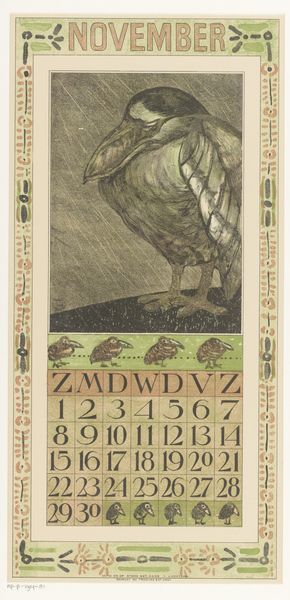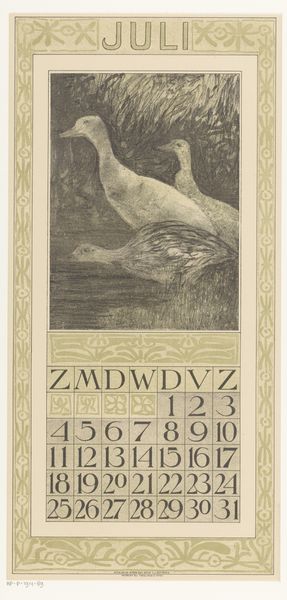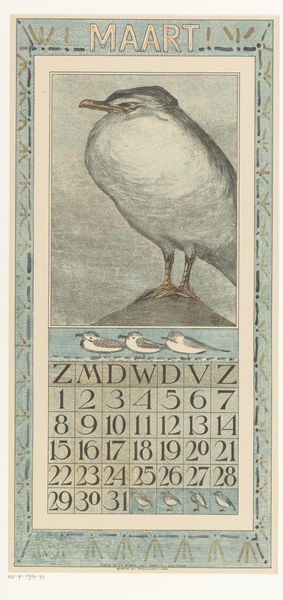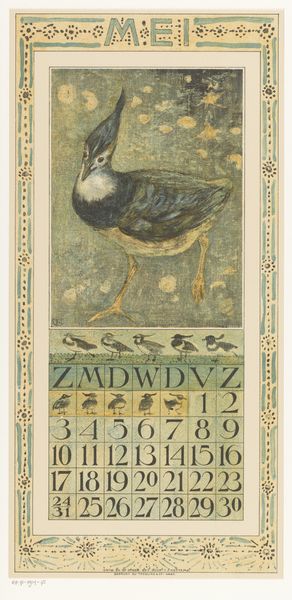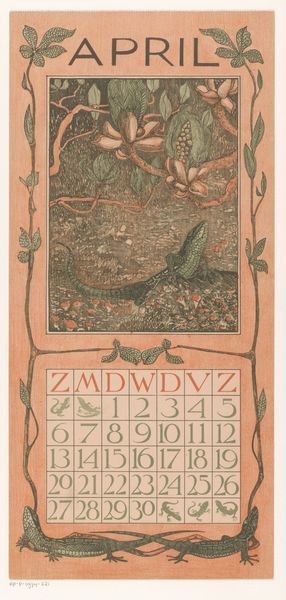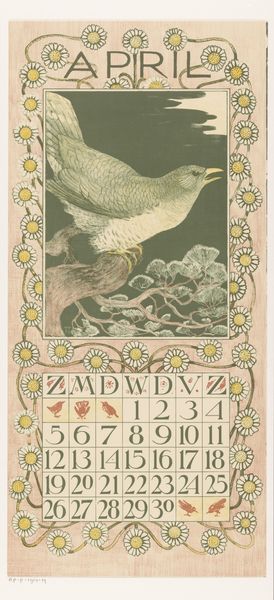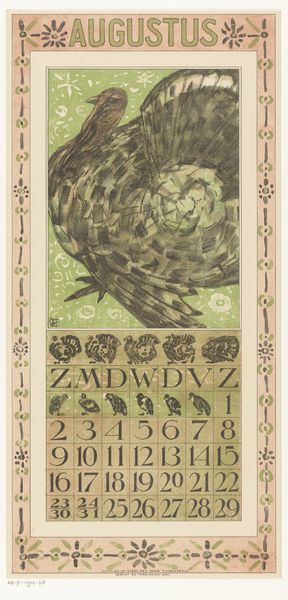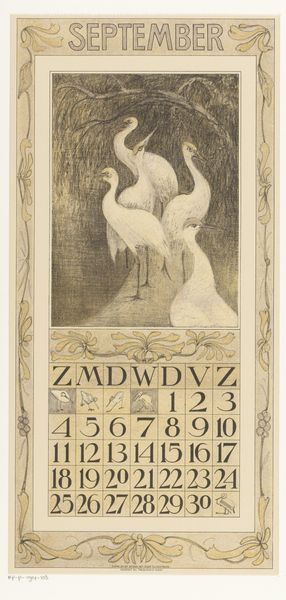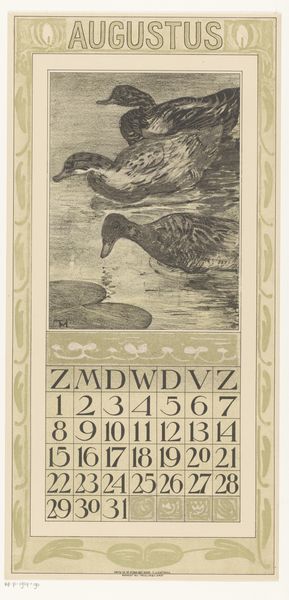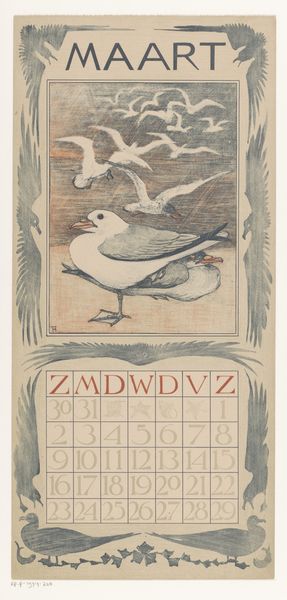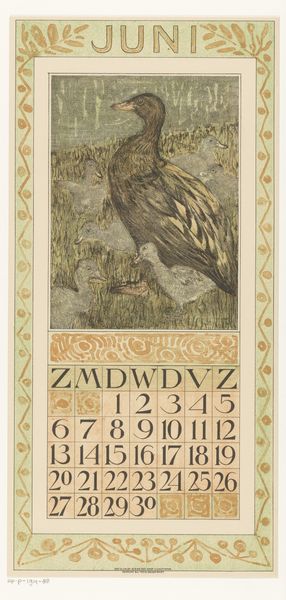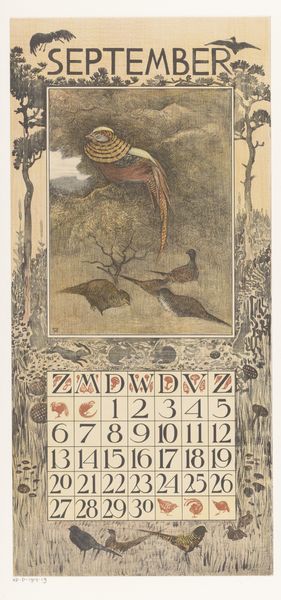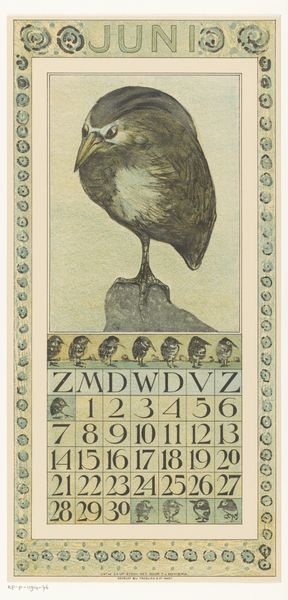
drawing, mixed-media, print, poster
#
drawing
#
mixed-media
#
art-nouveau
# print
#
landscape
#
symbolism
#
poster
Dimensions: height 440 mm, width 210 mm
Copyright: Rijks Museum: Open Domain
Editor: So, this is "Kalenderblad juli met scholekster" - a calendar page for July with an oystercatcher - by Theo van Hoytema, from 1907. It’s a mixed-media print, quite striking. I am drawn to the bird's serene stance; it seems both powerful and peaceful amidst the calendar grid. How do you interpret this work? Curator: What interests me is understanding this calendar page in the context of Dutch society at the time, in the early 20th century. How might we interpret the rise of art nouveau and the integration of nature within everyday objects like calendars? Think about the calendar not just as a marker of time, but also as a social and cultural artifact. Editor: I see what you mean! The bird isn't just decorative, it feels symbolic. Is it referencing a connection to the land, or perhaps a commentary on the rapid industrialization of the Netherlands? Curator: Exactly! Hoytema was deeply engaged with nature. He uses the oystercatcher, a wading bird, as a symbol of the Dutch landscape, one deeply entwined with water management and ecological concerns. Consider how this image could be a quiet statement about humanity's relationship with nature. Could it represent ideas of conservation or even resistance against disruptive change? What do you make of the subdued colors, and do they help convey these sentiments? Editor: The muted greens and browns do give it a nostalgic, almost melancholic feel, as if yearning for a simpler time. Curator: And what about the stylized border, reflecting elements of art nouveau, could this nod to contemporary art movements influence a wider societal view of the land? Editor: I hadn't considered that before. It really reframes how I see it; it’s not just a calendar page, it’s a statement about values and a specific historical context. Curator: Precisely, by understanding these intersectional narratives, we begin to unravel a fuller story. Editor: This really helped me understand how artistic intention operates within social history; seeing it not as an isolated beautiful bird on the page, but as a statement, embedded within a larger web of environmental and cultural issues.
Comments
No comments
Be the first to comment and join the conversation on the ultimate creative platform.
